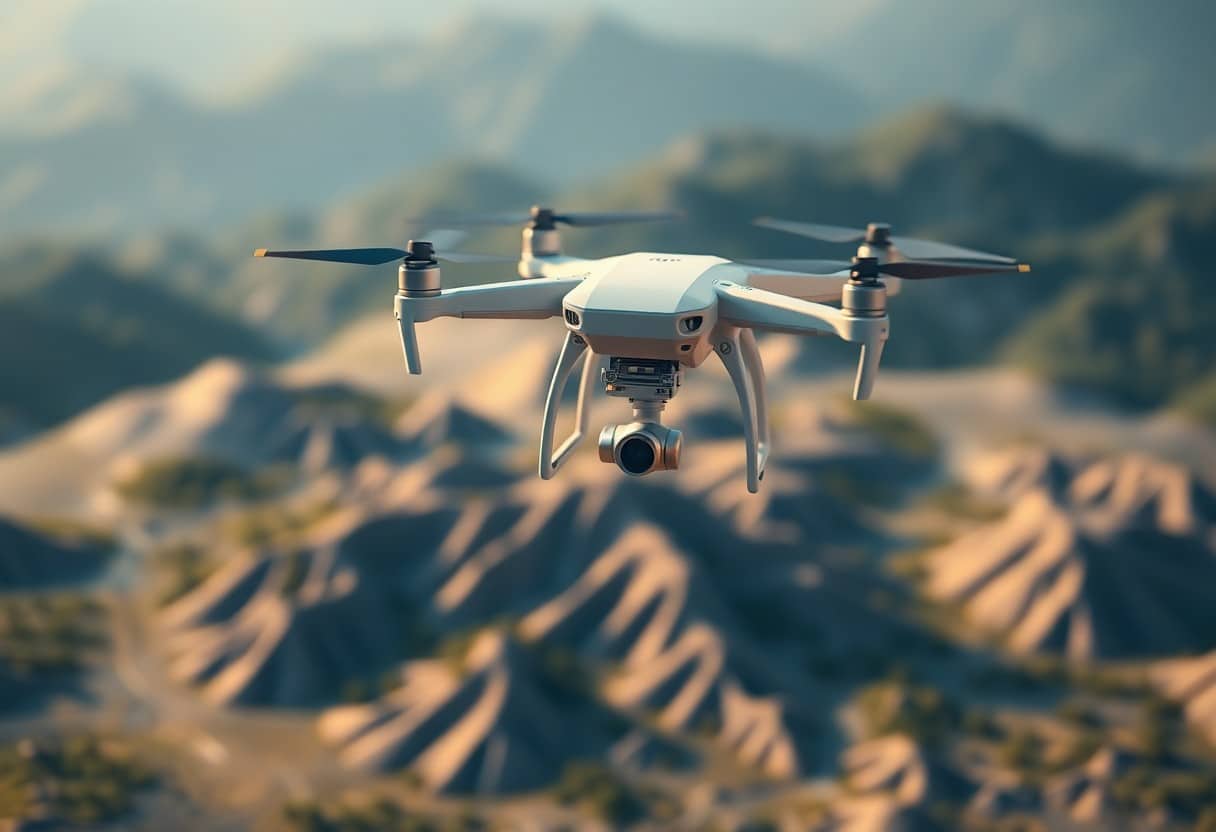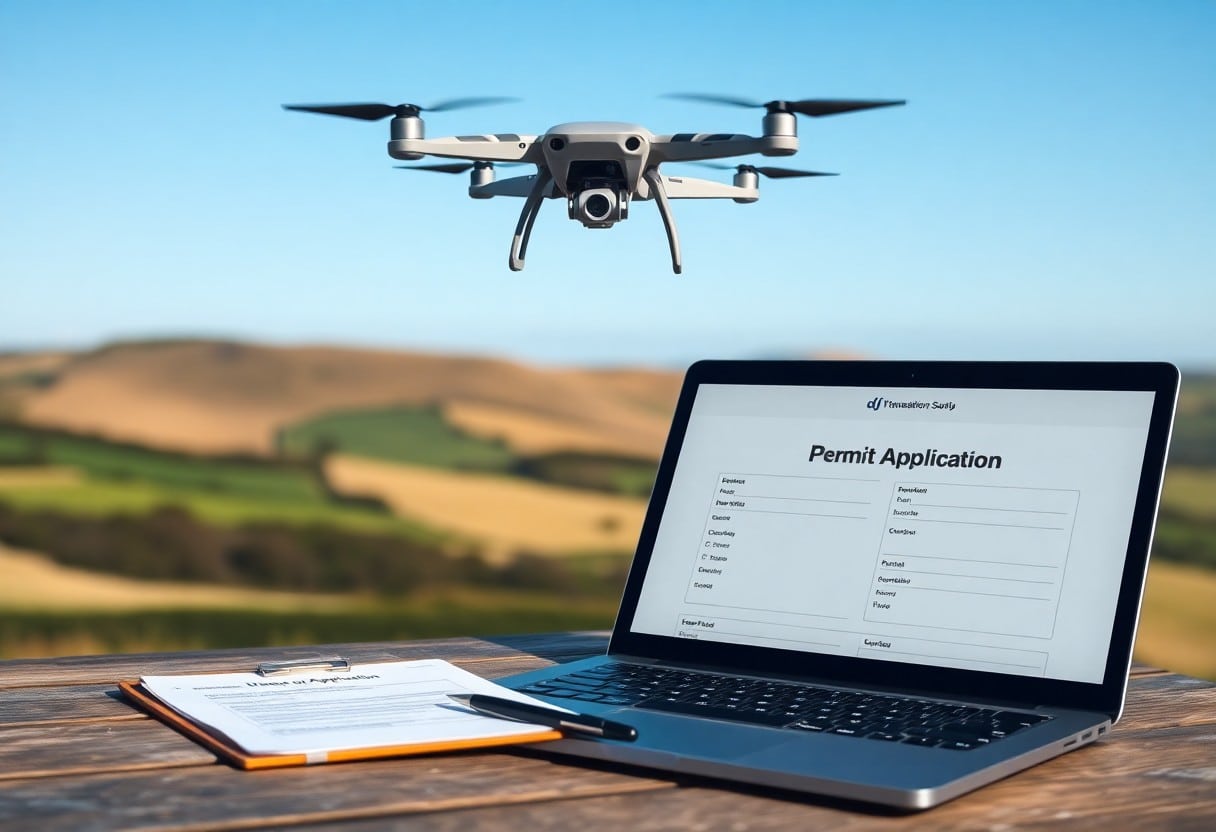What are the basic drone controls every beginner should know?
As a beginner in UAV (Unmanned Aerial Vehicle), mastering theBasic controlIt is important to ensure that you can operate your equipment correctly and safely. This article will introduce you toImportant operational controlsThese controls will not only enhance your flying experience, but also reduce the risk of accidents. Understanding how to control altitude, direction and speed will help you build a solid foundation for more advanced maneuvers in the future.
Key Points:
- Basic Joystick: Understand the location and function of the throttle, direction and pitch controls.
- Default Mode: Familiarize yourself with the different flight modes, such as Steady Mode and Manual Mode, so that you can apply them to different flight conditions.
- return function: Understand the auto-return feature to ensure a safe return in the event of an accident.
- Battery Management: Learn how to check battery levels and maintenance for extended flight time and safety.
- Flight Restrictions: Be aware of legal regulations and flight limits to avoid non-compliance.
- Basic Navigation Skills: Master how to use GPS and maps for flight planning to improve flight efficiency.
- Maintenance and Inspection: Make it a habit to check and maintain the UAV regularly to ensure that the equipment is always in the best condition.
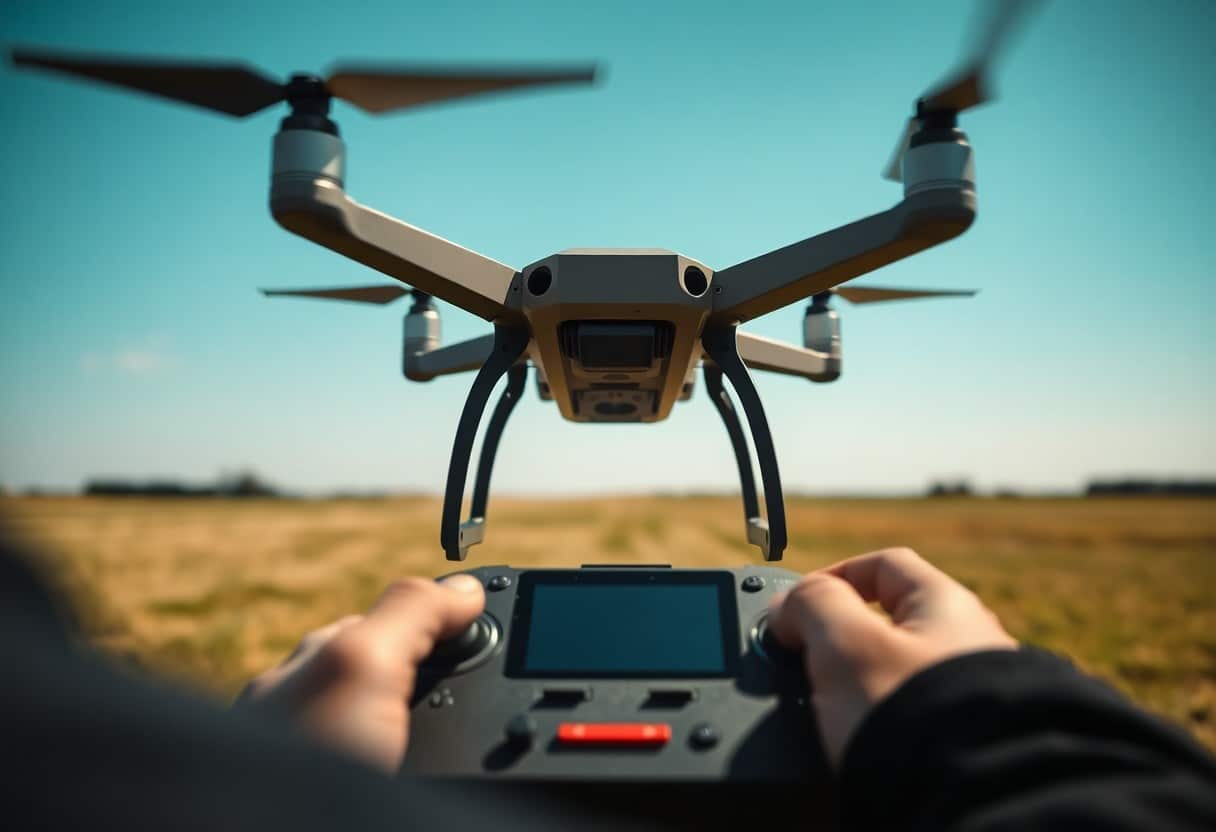
Understanding Drone Basics
Before you start operating a drone, it's important to understand the basics. Unmanned aerial vehicles (UAVs) are more than just flying machines; they involve a number of technologies, including image capture, navigation systems and controls. Being aware of how a drone operates will help improve your ability to operate it and ensure that you don't have an accident while flying.
Types of Drones
- multirotor: Suitable for beginners as it is easy to operate.
- fixed wing: Suitable for long distance flights and faster speeds.
- vertical take-off and landing: Can take off and land in small spaces.
- hybrid: Combines the features of a multi-rotor and a fixed-wing.
- Racing Drones: Usually used in racing, the speed is amazing.
Each of these different types of drones has its own specific purpose, so choosing the right one is important for you.
| Drone Type | Features |
| multirotor | Easy to operate, high stability |
| fixed wing | Long distance high speed flight |
| vertical take-off and landing | Suitable for small spaces |
| hybrid | Combination of multiple features |
Key Terms
Familiarize yourself with drone operations inKey TermsIt is important for you to get up to speed quickly. Common terms includeControl System,Data Linksrespond in singingFly around multiple targetsAnd so on. Understanding these concepts can help you make more informed decisions during flight and meet a variety of operational challenges.
In the world of drones, someKey Termsis something you must master. Whenever you mentionequilibriumIt refers to the ability of a drone to remain stable in the air. Another important term isGPS NavigationThis is an important technology to ensure that the drone can be precisely positioned and navigated. In addition, familiarity withFlight Timerespond in singingScope of OperationIt will help you to better plan your missions. By understanding these terms, you will be able to confidently conduct drone operations and meet potential challenges.
Basic Controls Overview
As a novice drone pilot, it is important to understand the basic controls. Mastering these controls will not only enhance your flying experience, but also ensure safe operation. Knowing how to maneuver your drone effectively and applying the appropriate controls during flight are key to success.
Flight Control Input
Flight control is at the heart of maneuvering your drone, and you'll need to learn how to use the joysticks on your remote control. These levers determine the altitude, direction, and speed of the drone, and their precise operation will make your flight more stable and reduce the possibility of accidents.
Camera and payload control
The drone's camera and payload control allow you to capture images and data in the air. While using the camera, you can make angle adjustments and focus changes to get the best shot.
More in-depth, when you operate the drone's camera and payload, theMake sure to adjust the camera angleandmonitoring rangeThe camera can be used for a variety of purposes, including the following: (a) to obtain the best possible image. If you select the appropriate resolution and image mode, this will not only improve the picture quality but also affect the battery life. Note that camera control may involve a certain amount of risk.If you are careful to avoid loosening the camera and keep it stable, it will not affect the shooting effect and the safe flight of the drone. Mastering these techniques will allow you to travel freely in the air and record unparalleled moments.
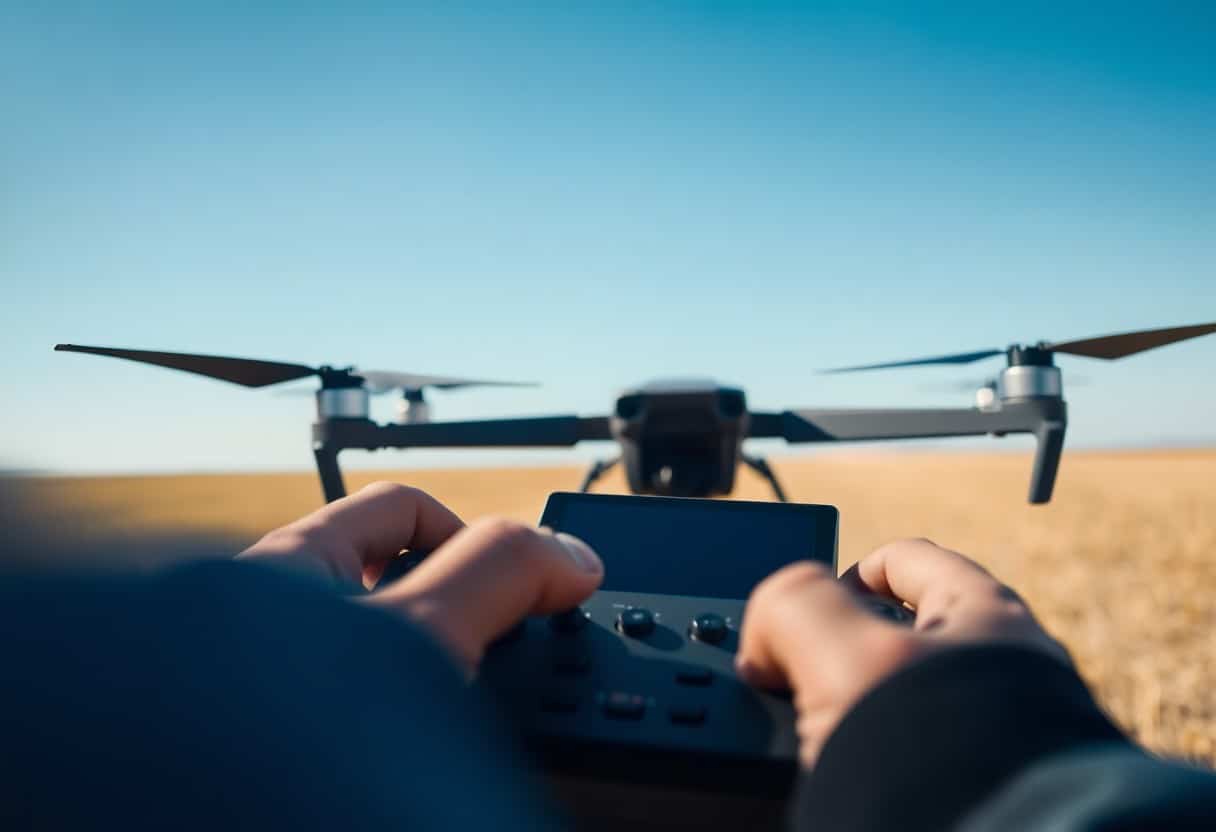
Pre-flight checklist
Before you fly your drone, you must conduct a comprehensivePre-flight inspection.This includes checking battery levels and the integrity of parts and drone connections. This includes checking battery levels, component integrity, and the status of the drone's connections to ensure that all equipment is functioning properly. By taking a closer look, you can avoid potential problems and ensure a safe and smooth flying experience.
Security precautions
Whether you are a novice or an experienced operator, always follow theSecurity precautions. Before flying, check local laws and regulations and operate in open areas, avoiding crowds and no-fly zones.
Facility Installation
appropriateEquipment SetupIt is the key to successful drone flight. You need to make sure that all accessories and batteries are in place and that there are no loose parts. Before flying, check the drone's settings, including the camera and GPS functions, for optimal performance.
When performing device setup, first ensure that theBattery fully chargedSecure the mounting to prevent power loss during flight. Next, check all cables and connections to make sure there are no signs of wear or malfunction. Make sure the drone is calibrated and adjust the camera settings to capture the best possible image for your needs. Such thorough preparation can significantly reduce the risk of danger during operation.
Basic flight maneuvers
Understanding basic flight maneuvers is important for every beginner. You need to learn how to take off and land smoothly, as well as control the direction and altitude of the drone. Mastering these skills will help you avoid common accidents, making the flying experience safer and more enjoyable. Suggested ReadingsDrone Permit Application - 9 Steps to Secure Legal Flight in the UKto improve your flying skills.
Takeoff and landing
Taking off and landing your drone are the most basic flight maneuvers. Make sure your drone is on a flat surface and the surrounding environment is free from obstacles. When taking off, you need to gently push the throttle to let the drone rise gradually, and when landing, you must carefully control the speed of landing to avoidfallThe skills you need to master will enhance your safety. The mastery of these skills will enhance your flight safety.
Suspension Technology
Hovering is an important skill in drone flying. To successfully hover, you need to be familiar with and master the balance of throttle and direction in order to stabilize the drone in the air. While hovering, you must remain alert to the wind, becauseStrong windThis will affect the stability of the drone. In addition, learning to use the return-to-flight feature is a critical step in case the drone fails while hovering. Regular practice of hovering will give you more confidence in a variety of flying conditions.
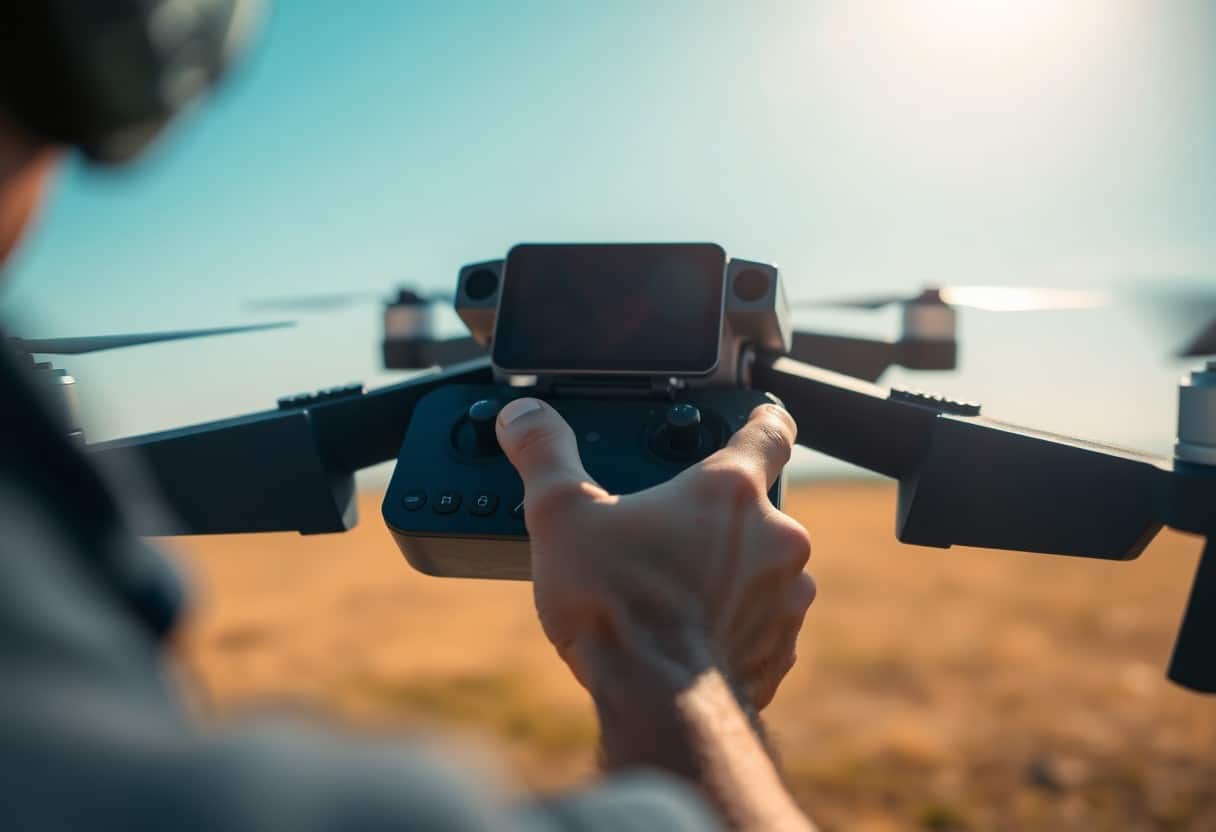
Troubleshooting Common Problems
Troubleshooting is an important skill, whether you're just starting out with a drone or have some experience. You may encounter problems such as poor connectivity or slow control response. Understanding these problems and their solutions will help you improve the safety and effectiveness of your flight. To learn more, check outHow do you ensure a smooth airborne flight approval experience?
Connection Problems
An unstable connection between the drone and the controller can result in loss of flight control or loss of control signals. Checking your radio channel settings and receiver for proper operation is the first step. If the problem persists, you may need to rebind the controller and receiver.
Control Response
You may find that the controls of your drone are not as responsive as expected, which can lead to unstable flight or accidents. Make sure your controller sensitivity settings are correct and that your flight mode is appropriate. Adjusting these settings can improve your flying experience.
When your drone controls are unresponsive.This is a serious security threat.. Your drone may not be able to react quickly enough when accelerating or turning. It is recommended that you check the calibration of the controls and make adjustments as necessary to ensure that your drone does not react quickly when flying.Gain optimal control and sensitivityThe following are some of the most important things you can do to minimize your risk. Timely adjustment of settings will make your flying experience smoother and less risky.
Safety & Compliance
Before operating a drone, understandsuretyandStatuteIt is important. Complying with local regulations will keep you and others safe and avoid legal problems. You can read this articleDrone Laws - 5 Steps Every Pilot Must Knowfor more information.
Understanding Airspace Rules
You must familiarize yourself with the different types of airspace and their associated rules. Some areas, such as around airports or military bases, may have flight restrictions. Following these rules is vital to your drone operations to ensure that you avoid violations.
Operation Guide
When operating a drone, you'll want to follow basic operating guidelines to stay safe and legal. First, make sure your drone is registered and check the status of all equipment before flying. Additionally, keep your drone in sight and make sure you don't fly in crowded areas to minimize the risk of accidents.
comply withOperation GuideProtect not only yourself, but others as well. Check the functionality and battery level of your equipment and choose the right weather conditions for your flight. Most importantly, keep
Observe soberly and be aware of your surroundings at all times to ensure that you do not collide with other aircraft or obstacles. Ensure that theFly in compliance with all laws and regulationsAnd social ethics, so that your drone experience will be enjoyable and safe.
Basic Drone Controls Every Beginner Should Know
As a beginner, it is important to understand the basic controls of the drone. You should familiarize yourself with takeoff and landing operations, master directional control and altitude adjustment, and learn to use the photo and video functions. You should also be aware of the weather conditions and your surroundings to ensure safe flight. Mastering these basic controls will help you improve your drone piloting skills and make your flying experience more enjoyable and professional.
Frequently Asked Questions
Q: What basic drone controls should a newcomer know?
A: Basic drone controls that a novice should know include takeoff and landing controls, smooth flight maneuvers, yaw, pitch and roll adjustments, emergency stop procedures, use of GPS navigation, and basic camera operation. These are critical skills to ensure safe flight and mission accomplishment.
Q: How to perform a proper takeoff and landing of a drone?
A: To perform a proper takeoff, first make sure that the propeller of the drone is functioning properly and that the environment is safe and free from obstacles. Use the left stick to slowly push in to raise the throttle, and then make any necessary directional adjustments once the drone has stabilized in hover. When landing, stabilize the descent speed and reduce the throttle as you approach the ground, and then shut down the engine completely after a stable landing.
Q: How to realize the smooth flight of a drone?
A: The key to achieving a smooth flight is to control the throttle and rudder stick. Avoid strenuous control maneuvers, keep your hands steady, and use slow and even movements to adjust your flight attitude. At the same time, pay attention to the effect of wind and try practicing in a windless environment.
Q: What is yaw, pitch and roll?
A: Yaw refers to the rotation of the drone around the vertical axis, which affects the flight direction; Pitch refers to the tilt of the nose up and down, which affects the flight altitude; and Roll refers to the rotation of the drone around the axis in the forward direction, which affects the lateral movement. These three actions are the basic attitude control of drone flight.
Q: How to handle emergency situations during drone flight?
A: In case of emergency (e.g. low battery or loss of signal), first stay calm and try to shut down the engine using the emergency stop button. If no connection is possible, allow the drone to return on its own. If this is not possible, observe the altitude and position of the drone and try to control it for a safe landing.
Q: What is the role of GPS navigation in a drone?
A: GPS navigation can realize the automatic return function, which enables the drone to return to the take-off point by itself in case of signal loss or low power. In addition, GPS can also help the drone to accurately position itself for waypoint navigation and automatic flight, which enhances the convenience and safety of flight.
Q: How much does basic camera operation affect the drone?
A: Camera operation is crucial to picture quality. Manipulating the camera's focal length, aperture and shutter speed can affect the results. Knowing how to adjust the camera settings in flight can effectively improve the picture quality and capture the best aerial images. In addition, you need to pay attention to preventing vibration and maintaining a stable shooting platform.
